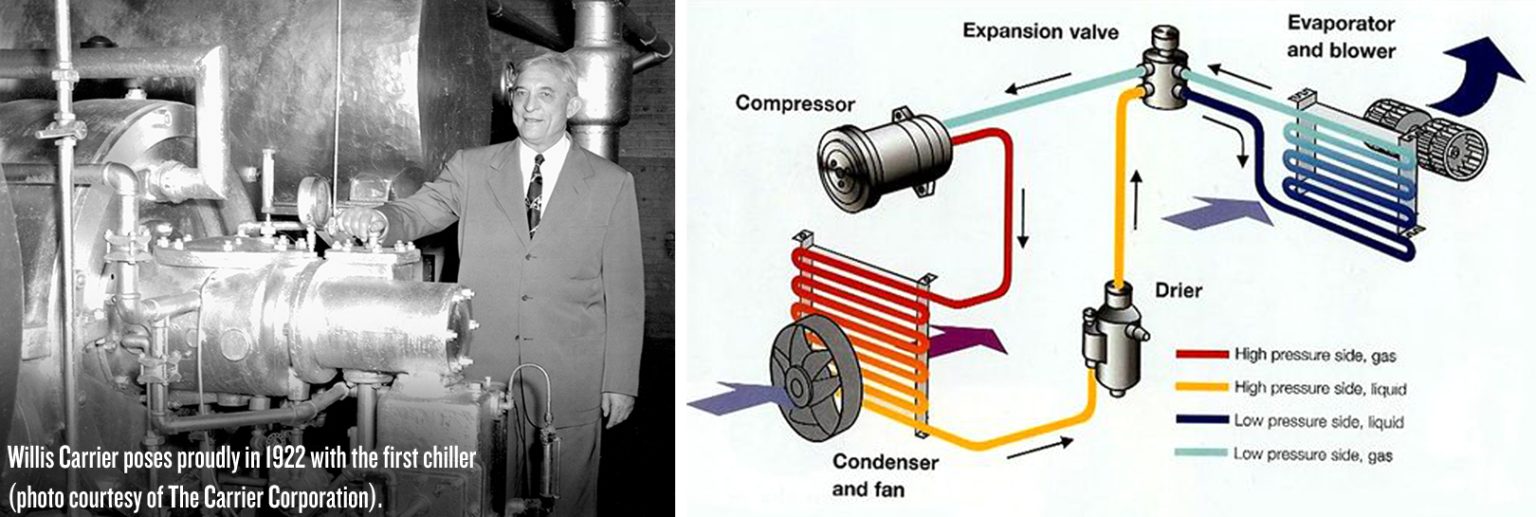This morning I plugged in my air conditioner for the first time this year because there’s a whopping heat wave hovering over Montreal. I love a cross breeze more than anyone, but it’s hotter than a witch’s tit so I decided it was time to bite the bullet. As I was perilously close to dropping it out of my second story window about a half hour ago, I started thinking about when and how these beauties of ingenuity came to be in the first place. Turns out it all started in England about 250 years ago with the help of Benjamin Franklin and a Cambridge professor of chemistry.
In 1758, Franklin and professor John Hadley of Cambridge University conducted an experiment to explore the principle of evaporation as a means to rapidly cool an object. Together they discovered that the evaporation of highly volatile liquids such as alcohol and ether could be used to drive down the temperature of an object past the freezing point of water. Then in 1820, British scientist and inventor Michael Faraday discovered that compressing and liquefying ammonia could chill air when the liquefied ammonia was allowed to evaporate. In 1842, Florida physician John Gorrie used compressor technology to create ice, which he used to cool air for his patients in his hospital in Apalachicola, Florida. In 1902 the first modern electrical air conditioner was invented by Willis Carrier (1876-1950) in Syracuse, New York in order to improve the manufacturing process in his printing plant. Not only did it control the temperature, but it also controlled the humidity which helped maintain consistent paper dimensions and ink alignment. Eventually his technology was shared thanks to the founding of the Carrier Air Conditioning Company of America and the democratization of cool air, with sales expanding dramatically in the 1950s.
The first major wave of air conditioning use occurred in various industrial factories across the southern United States, and the impact of air conditioning in this region and across the entire country can’t be overstated. Sun Belt cities and other places where stifling hot weather is a factor enjoyed an economic boom as people settled in large numbers, protected from the elements by Carrier’s invention. That population shift in turn changed the political balance of the nation. Even the nature of architectural design changed, with perhaps the most conspicuous example being the smoky glass-clad skyscrapers that now dot almost every big-city skyline. Unfortunately, however, experts have linked the long-standing use of air conditioning in the South as a major contributing factor to dramatic levels of obesity in the same region since appetite naturally decreases in uncomfortably high temperatures and increases in cooler temps. Coincidentally, my air conditioner is directly beside my fridge. See you at the air conditioned gym very soon.


